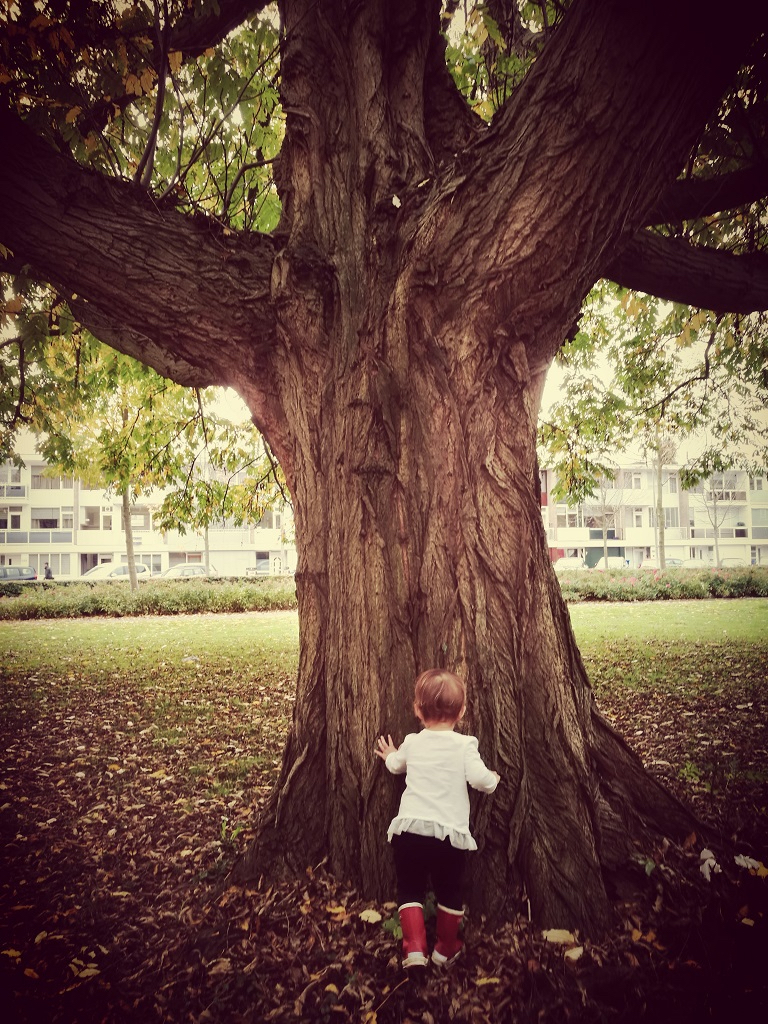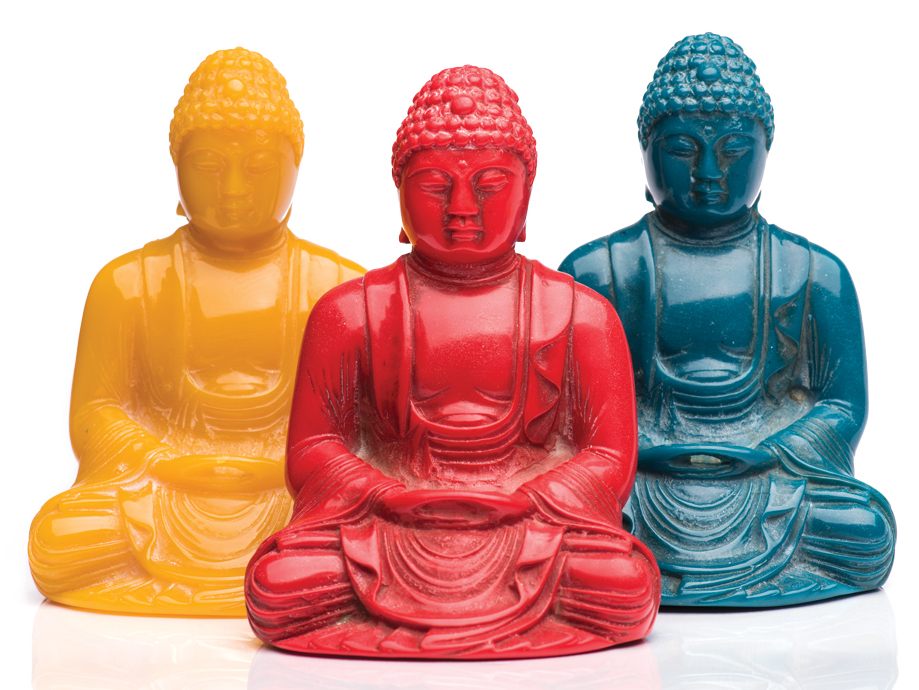Something Naturally Arises
Another excerpt from Ajahn Sucitto, this time from a beautiful little talk (less than 12 minutes long!) in which he suggests “entering into a relational field” — instead of reacting to things in terms of “subject-and-object.” (Thanks for pointing me to this one, Carolyn.)
Sucitto says, “Be on guard for any time we see something as an ‘object’ — especially if it’s a person — (oh, her…or he’s my boss…or she’s my wife…). As soon as you get one of those: Uh-oh! You’ve just whistled up a problem! Because objects in that experience are always saturated with unconscious craving, resistance of various kinds, and mental factors we haven’t acknowledged.
“When that happens, it’s time to: Stop. And check. Not the object or the subject, but: What’s the relational tone of mind? Is it ill will; is it regret; is it nagging; is it hungry; is it blaming; is it comparing; is it ‘should-be’; is it ‘if only he was…’
“Ask what is happening in that relational field. And then: could that activity just stop….and take a break — a break from suffering!
“Then from there, take a breather and ask: What seems important now? What’s the one important gesture now?
“Then from that place, you can just… have a little bit of give. Because: Why not? And it makes you feel good!
“The more you can enter that kind of place, the more you can get all kinds of growth, development, understanding, realization… Shifts can occur. In relationship with other people. In relationship with yourself!
“….So, entering the relational field: It’s always kind of fresh because it’s not pre-conceived. Even a good strategy like: OK, I will be loving and peaceful. That’s a nice idea, but it’s an ideal. And where does that come from? [laughter]
“Instead, could something naturally arise…through the relinquishment of mental obstructions. That’s really a mystical and religious experience — when something naturally arises — which is not myself.
“And it happens. Definitely. It happens.”
***
This excerpt is edited and condensed. I highly recommend listening to the whole talk (and doing it more than once!). Click here.
Where Am I Now?
More from Ajahn Sucitto:
“Whenever you feel yourself getting pulled, that’s the most important time to — pause. Pause for just 20 seconds…or a minute…and ask: Where am I now?
“Not: What should I do? But: Where am I now?
“You might think, ‘I’m in a restaurant. I’m in an office.’ No, that’s just what it looks like. That’s what your eyes can see. That’s what your thinking mind can tell you. But the real question is: Where do you feel your presence? Where is your presence now?
“Presence is a sense of firmness, of stability. It’s always here. And it’s always being dissipated into the sense fields. So when we ask, “Where am I now,” this is not really asking for a verbal response. It’s pointing to the quality of the citta — of Awareness as Presence. We can notice the trembling, or the questioning or the feelings or the sensations — they’re all moving and changing.
“Meanwhile, with all that, as one is acknowledging that it’s all moving and changing — what is it that acknowledges the moving and changing? It’s: Presence. The sense of presence of the citta, as a simple quality of being. There’s a stillness there. A point of stillness.
“It may sound difficult when I try to put it into words, but we can — pause — and ask: “Where am I?” Or: “What’s really here? And within this realm of sights and sounds and thoughts and energies and emotions and pushes and pulls and moods and impressions — Presence is here.
“Take your time with that. This is Being. Being is always exactly the same. Being doesn’t change in time. Being is not the person. Being is not the moods. Being is not the thoughts. Being is not the activities. Being is just being here. And that’s a refuge. That’s an island in the middle of the stream, in the middle of the flood. You can return to that. And then from here, you can ask: “What’s useful? What’s important? What is the most skillful thing to do, at this particular time?”
***
This is just an excerpt from Ajahn Sucitto’s talk, The Duties of Heedfulness, beginning at about the 26 minute mark. I highly recommend listening to it in its entirety. He’s talking about how to make daily life into a meditative practice! Click here to listen.
Try: Seeing a Tree
 Suggested Exercise, from Ajahn Sucitto:
Suggested Exercise, from Ajahn Sucitto:
“One thing that’s very important in all meditation practice is a sense of changing speed. Because in the change of speed you come out of that blurred, impulsive rush, whereby you go down the channels [of habitual patterns]. So this is about a change of speed… or calming, if you like…. or sustaining attention.
“I’d like to suggest that you practice this for a while, maybe 30 minutes, outside… it’s something I quite appreciate doing… just let your eyes rest upon, say, a tree or something like that… Stay with it visually, just let your eyes stay there. And you will notice how, if you stay with that for 5 or 10 minutes (a sustained period of time) — you’ll notice all the changes that occur in that simple experience: Seeing a Tree.
“So, let’s say you look at it and expectation occurs. OK, expectation — that occurs. Then you notice a detail. Oh, that’s kind of interesting — that occurs. Then maybe appreciation. What a lovely tree — that occurs. And then, Well, I think I’ve done that, had enough — that occurs. [laugher]
“And then maybe the visual thing starts to dilate. In other words, you see tiny details and you see the big field, and if you keep your eyes on it, it will start to vibrate (visually). And it becomes much more amorphous… and you stay with that, until eventually — tree???
“The word ‘tree’ no longer applies.
“This is when, in a way, what’s happened is: the object-forming tendency, which goes on for a period of time, starts to…. Well, I’ve seen that object… It’s done its job. It’s said, Oh, that’s a leaf; that’s a twig; that’s bark; that’s green; that’s black; that’s a color; I like that…. and eventually it’s, Well, I’ve said all that, and it starts to not have anything more to say. [laughter]
“And then, one feels more touched by it.
“As the object-forming and the categorizations wear out, or receded… one gets more and more touched… There’s an intimacy, of presence, that occurs. I don’t know what it is, but I’m feeling really attentive, and awake, to this. And a sense of appreciation occurs.
“These are the sorts of modalities that can occur, because all these tendencies… these aggregates… which seem so concrete, are only made so by the rapidity of the juggling act that keeps them all binding together. And the passion for it. The excitement to make it happen.
“If you stay with something long enough, it starts to… the object-forming tendencies begin to… you know…. wear out.
“But it’s not that there’s nothing there. It just becomes more… un-named. And something is very bright about that.
“So I would suggest you take some time and see if you can find… either standing, or a bench or something whereby you may be able to sustain… It’s not a matter of having your eyes rigidly focused, but keep a sustained attention. You can look around it, look up and down… pause… slow… slow your eye movements down… as if you are tasting with your eyes, every grain of visual experience, every little fleck of it.
“Yeah.
“This is all seeing. It is just seeing. Until the mental configurations begin to pass away.
“OK?”
***
OK!
This is the entire transcript (very lightly edited) of a lovely little less-than-5-minute talk by Ajahn Sucitto, title: A Suggested Exercise. Listen to it here.
Standing Like a Tree; Breathing Like a Buddha
 This post is long, I know, but bear with me. It’s another excerpt (which I just couldn’t cut!) from the terrific Qi Gong and Anapanasati talk by Ajahn Sucitto.
This post is long, I know, but bear with me. It’s another excerpt (which I just couldn’t cut!) from the terrific Qi Gong and Anapanasati talk by Ajahn Sucitto.
“In teaching Mindfulness of Breathing over many years, and listening to people in interviews, so many of them say to me, ‘Aggh… I can’t do it! My brain is thinking all the time. I feel so tense and tight. I’m trying to focus on this point on my nostrils — I can’t find it at all. I can’t meditate!
‘I try really hard to do it and I’m getting more and more tense. I just give up. I can’t manage it. I was breathing OK until I started being mindful of it! I could breathe in and out quite normally and then when I started being mindful of it, I started getting tight and constricted; I felt pain; I felt uncomfortable; I felt stressed, and you know… Surely this can’t be right! The Buddha says: I call this a comfortable abiding, a pleasant abiding, it makes one feel fresh, one’s eyes feel good… This can’t be the same thing. What’s happening?’
“What’s happening is: the mind is affecting the breath. Before we brought it to our attention, breathing wasn’t a problem. We had other problems — also which were because of our attention — like thinking about this, thinking about that, and our attitudes.
“But very often, for people these days, it’s the ‘work mind’ that comes forward. The ‘work mind’ rushing to get things done; the ‘work mind’ anxious about not doing it good enough; the ‘work mind’ desperately in a hurry to try to achieve results; the ‘work mind’ tightening up to make sure we’ve got it exactly the way it should be. The ‘work mind’: stress, stress, stress, stress, stress. The mind gets conditioned into that kind of behavior. Anything we think is important, anything we think we really should achieve — the ‘work mind’ gets hold of it.
“You were breathing OK until you started to think it was important, and you thought it was going to give you good results. Important! Good results! Ahhh: go to work.
“And it IS important. We DO want good results. There IS certainly a process, and a progress – so it must be ‘work’, right? I don’t think so….
“In the Buddha’s time there wasn’t that ‘work mind’. They could certainly put energy in, but it was not that same compulsive, tight, up-in-your-head state of the ‘worker,’ who lives up behind the eyes and the forehead….
“We think: ‘OK, anapanasati, right — let’s get to work on that. Have we got it in our heads? Tighten up the mind! Tighten up the face!’
“We think this is concentration. The English word “concentration” CAN be applied to that. But that’s not samadhi. There’s no piti (happiness). No sukkah (ease, comfort). Those are not there.
“And it is sad. Because there is a true sincerity, and a true determination, to cultivate the mind. But we’re doing it with the wrong energy. It’s the right idea, right theory, right aspiration, wonderful resolve! But we’re using the wrong energy.
“What the Buddha is saying is there’s a natural energy that happens by itself. Breathing in — happens by itself. Breathing out — happens by itself. There’s an energy flow there.
“This is what we should get in touch with. With the kind of quality of attention that can maintain that focus. It’s not a focus that’s up in our forehead, which is so often where we assume it should be. We call it ‘watching the breath.’ Watching the breath? I’ve never seen a single breath! [laughter] Maybe on a very cold morning you might see a bit of mist. But I’ve never seen a breath. And I’ve been practicing this for years. When I look in the suttas, the Buddha never says ‘watch the breath’. He says ‘be mindful of breathing in and breathing out.’ He’s talking about being mindful of a process. Of breathing in and breathing out. So rather than this idea of being up in your head, with tightening your attention, maybe there’s another way that we can attend to that.
“And yes, there is.
“When you cultivate qi gong, you take a standing position. Like a tree. You bring your awareness particularly down to your feet, your ankles, and then you build it up, and gradually you spread your awareness from the soles of the feet, up through the body, through the spine, through the trunk, into the head. So that you cover the entire body and it is held in alignment. It’s called: balance. So you’re definitely attentive. You’re fully aware. Your mind isn’t wobbling or jumping around. It’s not dithering. Or confused. It’s actually firmly based on the entire body — as an energy form. We focus on the quality of balance.
“You can’t do that with a thought. You can’t think: balance. But your body can feel it. You can sense it. You come to realize this body is sensitive to a quality of balance, which itself is rather pleasant because there’s no stress in balance.
“Balance means the absence of stress. We’re not inclining to left or right, forward or backward. Balance is free of bodily bias. It’s free of pressure. When you’re in balance, you’re as stress-free as you can get.
“And there’s an energy there, that becomes apparent, that’s holding your body up. You learn to relax as much of your muscle as possible when you feel yourself being held. This is called: Standing Like a Tree. And the awareness is spread over the entire body. As you stand like that, sustaining that, there is a way of holding attention that is not narrow. It’s not constricted, it’s not conducive to stress, and yet it is very carefully held. You use a wide focus to do that.
“As you stand with that, you can begin to experience that there is this rhythm that starts to express itself and then… oh, there’s breathing! It’s a soft, rhythmic process. And you feel the energy of it. The vitality of it. You feel the way the whole body can feel it. That it’s no longer so constricted.
“So this gives a very good way in my experience of both improving bodily posture and changing one’s idea or impression of what the body is about. So that it’s not just this thing that we see with our eyes; it’s not the flesh body; it’s an energy body. It’s something that we begin to see is quite natural. It’s not mentally derived. It’s not an opinion or a view. It’s neither something we feel proud of or worried about. It’s free of those mental proclivities. It happens by itself. It’s naturally refreshing. And it’s naturally sustaining; it’s naturally calming; it’s naturally clearing of tension, dullness, restlessness — the hindrances! (The energies of the hindrances.) When the body is bright and open like that, the hindrances find it very difficult to get in. And so, you cultivate attention like that.
“The result of this is the body loses its tensions and congestions. It becomes a happy place for one’s awareness to sit, and breathing happens to you quite naturally. In other words, you don’t have to search for it. It comes to you. It comes into your awareness.
“You don’t have to decide where to focus; you feel it. You feel it as it’s happening. You’re training your mind to be more receptive to a natural process rather than being proactive and having to create something. This means that the mental obstructions and the mental proclivities — particularly the ones we experience as the mind set I call ‘work mind’ — these can be laid aside. And instead we feel the natural harmony, peace, and vitality that the Buddha must have experienced in his own process of awakening.
“So then we are truly breathing like a Buddha.
“How do you think the Buddha breathed? Chest open, shoulders back. Enjoying the bliss of breathing in and breathing out. This is nature. Nature manifesting in this way.”
***
Click here for the full recording. The excerpt above begins at about the 38 minute mark.
It’s Not Just Anatomy
 A few days ago I found out that — for the fourth year in a row — my name did not get chosen in the lottery to attend Ajahn Sucitto’s month-long retreat at the Forest Refuge.
A few days ago I found out that — for the fourth year in a row — my name did not get chosen in the lottery to attend Ajahn Sucitto’s month-long retreat at the Forest Refuge.
Bummer.
But I consoled myself by listening to some of his recent talks on dharmaseed, where I came across this fabulous one, in which he begins by talking about using qigong as a support for the practice of mindfulness of breathing, and ends — well, in his words: “perhaps gone beyond the bounds of this particular talk.”
I highly recommend listening start-to-finish, but just to give you a hint of where he goes with this, here’s what he says at about the 31 minute mark:
“Breathing is energy. It’s not just anatomy. It’s an energy form that can be trained, moderated, and harnessed for very powerful spiritual purposes. In the Anapanisati Sutta (Teaching on Mindfulness of Breathing), it’s being used as the process of feeling the entire body, steadying and smoothing out the energies in the body. If we use more ordinary language, we might say our ‘nervous energy.’ Whether we’re jumpy, passionate, tense, or we’re experiencing a lack of energy — mindfulness of breath steadies and smooths all that.
“The Buddha says, This you do, and then you move on to the qualities of piti, which is a joyful, rapturous experience that arises when the body’s kayasankara [body energy] has been steadied. This is where the hindrances are put aside. So you experience the quality of piti — rapture, a brightened state — and then sukkha — a happy, comfortable state — and with these you also calm and steady the cittasankara — the emotional energy.
Sankara — meaning the formative quality. So with the body, it’s the formative quality that began when we were born. It’s been conditioned. It’s conditioned by birth. When you were in the womb, you weren’t doing it. As you come out, you switch it on. It’s a creation. It’s created by life itself. And it goes on until it’s finished — dead. That’s the creation of sankara.
Cittasankara is different. It’s generated. And it’s something we can moderate within this life. And in the Buddhist understanding, you can free the citta from sankara — without dying.
In fact: This Is the Deathless.”
***
Want to know more? Click here to listen.
How to Dissolve Tension
I got this little gem of a quote last night from listening to one of Ajahn Sucitto’s newly posted talks, which was part of his response to a question about how to relax tensions that are “locked up” in the body:
“The universal solvent is goodwill.”
Relax: Body. Breath. Mind.
One of my oldest habit patterns is believing that MY way is the RIGHT way. This can be very painful. For everyone!
Of course, sometimes my way IS the right way…or at lease ONE of the right ways…but it would be a whole lot better if I could avoid getting caught in this kind of thinking.
Mindfulness, of course, is the way to break free of old habits, so I’ve been working with that. But then last night, I happened to listen to a talk in which Phillip Moffitt describes how he developed a specific practice — for himself — to address this very habit!
He calls it Relaxing into Surrender:
“I started this practice when I was working with a particular area of my life… I was repeatedly getting caught in something that was not personal in nature, but nonetheless, it was something that I very much wanted to go my way.
“The feeling was one of tightness, closed heart, closed mind, and it was an unwholesome feeling. So I started relaxing. And then as I was doing it more I realized: Ah, there’s a bigger teaching here. For me! I started this practice not to teach it to you, but for my own practice.
“What I have done now for these past 23 months is: periodically, every day, I will take just a brief 30 seconds or 3 minutes or 5 minutes or whatever it is…and I will relax. I will relax the body; I will relax the breath; I will relax the mind state. As best I am able.
“So: driving a car, sitting in a meeting, I’ll just relax. Now maybe it’ll be in the middle of something that I actually have a point of view about, but other people are talking and I will sit there and I will just consciously relax: body, breath, and mind. Driving down the highway I will do it. Talking on the phone I will do it. Being by myself. Walking out in nature. Over and over again… I make a mindfulness practice out of relaxing.
“What I discovered is that, although I already had a great deal of equanimity, mindfully relaxing day after day throughout the day in this way opened me up to a new level of relaxing, of letting loose of tension in attention, of tension in the body, tension in the mind state and it brought up this possibility repeatedly of surrendering.
“Because once I’d done all that relaxing…then I realized: OK so now here I am really wanting to affect the outcome in the decision we’re making in this particular meeting, but, who knows…maybe what I think would be best isn’t the best. But even if it IS best, maybe it’s going to happen and maybe it’s not. So: just let it go.
“But not giving up the point of view or failing to articulate that point of view!
“From a classical Buddhist teaching, this is letting go of sakkays-ditthi (personality view)…. which is the view of seeing everything from a dualistic perspective, from a personality — I like this and I don’t like that; I don’t want this to happen and I do want that to happen — and being attracted to all of that, to taking it in such a way that there is tension, there is clinging, there is holding onto it.
“But not letting go of your values! Of course you want your community to be a safe community. You want your country to be a country of dignity and of kindness. And honesty. Of course you want that. Of course!!! But the getting tense around it is separate from the wanting of that, of having that as a value…
“What we surrender is the getting defined by it. So relax throughout the day and see: Oh, I can relax in this moment. Over and over again. Then this idea of surrender will come up in its own form, in its own time….
“The breath and the relationship of the breath to the emotions is a multi-dimensional experience. If you never experiment, you aren’t giving yourself a chance. This very simple exercise that I’m inviting you to do of relaxing the breath with the body and the mind, in the way I’ve said up to this point — that is enough.
“I can give you very fancy kinds of breath work, of controlling the breath, of controlling the inhale and the exhale, where to place the breath, where to follow the breath… I’ve done lots of very esoteric practices. But you do not need those practices for what we’re pointing to tonight. You really don’t.
“For most of us, we have to have some sort of practice. Otherwise our minds just take over and there’s some part of us that’s just on autopilot…
“So we relax, but we don’t abandon practice. Surrender doesn’t mean quitting. It’s a specific use of the word ‘surrender.’ You’re surrendering attachment to outcome. You’re not quitting. You’re not being asked to give up the juice of your life. You’re being asked to practice letting go of your attachment, your clinging, your demand that those areas of your life be a certain way.”
***
I really see how this could have a big impact…over time, of course. Phillip says to try it for at least 3 months.
OK, Phillip. At least for the next 3 months, I’m taking this one as a specific practice. Anybody else out there care to join me?
(The excerpt above is from Phillip Moffitt’s talk called Relaxing into Surrender, beginning at about the 40 minute mark. It is lightly edited for readability. Click here for the full talk.)
Try a Tiny Retreat
I was listening to a talk by Phillip Moffitt on Choiceless Awareness — not with any particular intent except to be listening to Phillip give a dharma talk — and I heard him get started by talking about samadhi practice, and saying that no matter what kind of meditation we’re doing, we start out by collecting and unifying our mind…and that as we build up continuity, over time, “our mind gets really stable.”
Right. Nothing new there.
But then he said: “Really stable. Not so much during an evening like this [he was talking to his Sunday Night sitting group], and certainly not that much at home (usually) if we’re just doing 30 minutes at home — but if we’re doing a half-day, one weekend a month — the mind can get pretty darn stable….in a half day, if you’re there alone, and you don’t have some big thing on your mind. You can really get going on this.”
And I thought: Wow.
I have a daily sitting practice, which I just “kicked up a notch” by increasing the amount of time I sit. (And I’ve really noticed a big difference as a result.) But I never thought about scheduling a half-day, here at home, once a month.
And then I thought: I could do it!
So…I’ll be taking a Tiny Retreat — on the last Friday of every month, from 8:00 am to 12:00 noon. Starting Friday, May 25.
Want to join me? (You could do it on a different day, at whatever time you want.) But we’d still be doing it “together.” We could check in with each other about it. Or just text to say that we’d done it.
I’m serious. Email me here if you’re interested.
Think about it!
What Could Stop You?
 I’ve been listening to some of Phillip Moffitt’s talks on Awareness lately and came across this particularly helpful little bit of dharma wisdom:
I’ve been listening to some of Phillip Moffitt’s talks on Awareness lately and came across this particularly helpful little bit of dharma wisdom:
“One of the big understandings and training that comes out of meditation is that we learn to start where we are, and we learn to start over.
“We connect mindfulness with clear intention, because mindfulness without a clear intention succumbs to the ego.
“So we are mindful and we have a clear intention. Then — when we add patience and persistence — we are a force to be dealt with.
Why? Because we are always willing to start where we are. And we are always willing to start over!
“For example, we’re in a situation and we get thrown off. We become aware: Oh, I’m off center. OK. Come back to center.
“We don’t go into: Oh, I always get off center. You know, ever since I was a child and I didn’t get that support I needed… Or: I’m never able to stay centered…or any of this judging and comparing. No: Just start over. But we can’t start over from somewhere other than where we are. We’re lost — so we start from there. And then we move back to center.
“So often we try to start from where we are not. It’s easy to see this in meditation. We sit down and we have an idea of what mediation is, or how this meditation is supposed to be, and we’ll try to start from where we think we should be. But the truth is that we’re sleepy, or we’re tired, or we’re something else that’s other than where we think we should be. And the effect of that is actually to lessen our effectiveness as meditators. We’re better off recognizing the sleepiness: Oh, sleepiness is like this.
“An awareness of the sleepiness and a skillful relationship to it will make it less likely that we will succumb to it, not more likely — as long as we have intention. As long as we know that in this moment: I intend to be awake and meditate. (If that’s the truth. Sometimes that’s not the truth for us. We actually don’t mind it. We’re thinking that we’re just going to doze through this one.) I’m not saying that’s wrong. Just know we’re doing it! Just know that we’re making that choice…
“Starting where we are requires patience. Starting over requires persistence. With those two, plus mindfulness with intention — What do you think happens? What’s someone going to be able to do to stop you, if you’re willing to start over from wherever you are?
“Oh, I’ve just been defeated! OK. Starting from ‘defeat,’ here’s where I’m going….
“It’s very powerful.
“So powerful that I always remind people that we must take responsibility for what we learn in the dharma. As we gain more impact, more personal empowerment, it’s very important that sila — the commitment to ethical behavior — comes with it.”
***
This excerpt is from a daylong course taught by Phillip, called Awareness of Awareness. It begins at about 8 minutes into this talk and has been edited for readability.
Ego-hood
I was listening to a talk by Ajahn Sucitto last night and was so struck by what he said about our sense of self and what it does to us that I just had to get up and write it down. Here it is (slightly edited for readability):
“We have so learned to BE our selves and to DO things, that it can be hard to just sit with ourselves in a sense of sympathy — rather than criticizing or constantly having a plan to change things — but just be present with oneself in a sympathetic state. This fundamental quality of a sympathetic resonance with what’s experienced comes from a certain depth of realization, when the citta [heart/mind] is clear enough, not so driven, not so impacted with ‘ego-hood.’
“The self image tends to block that. Because the self image is making us more concrete and less resonant, more prepared and less open, more strategized and less intuitive, more competent and less caring.”
***
It’s a very rich talk. The quote above starts at about the 10 minute mark, but it’s really worth your time to listen all the way through. Click here.






